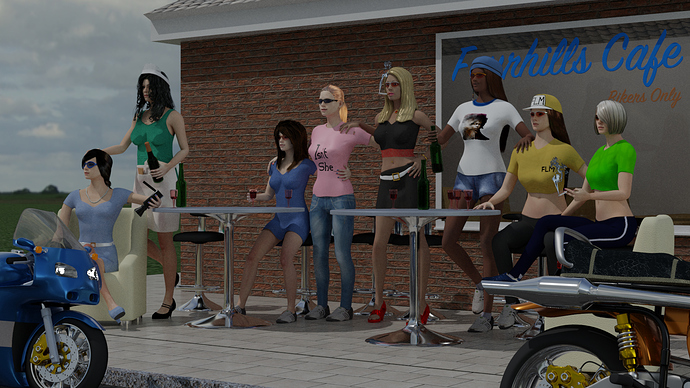Hi Hadrien my friend, sorry I am a bit late replying to this, but what with my current blender project and flying lessons and exams, I am a bit busy just now.
Hi also to @4096,
Anyway, on the the IK issues; I was at first very sceptical of ANY IK solver, until I understood the maths behind it. On thing that I went back to was Meccano models to understand how to constrain and move an IK chain. Doing something physically is far better than trying to do it mathematically as a first pass. If you build a human arm, the first thing to understand is what movements the arm is capable of, rather than what Blender allows you to do.
The shoulder joint is a ball and socket, so in theory it can move any way, but it is constrained by tendons that restrict the movement, also the two thoracic shoulder bones move with any shoulder movement, thus alleviating the constraints imposed by the tendons, hence we can do a lot with or arms at the shoulder. the elbow is another matter in that it is essentially a hinge, that can also articulate. So I built a rig in Meccano and imposed restrictions on it by using other parts until I could replicate the arms total possible movement. This I used to understand where I had to constrain the Blender armature.
First thing to remember - other constraints are all overridden by IK, so don’t bother with them. Second, pole target bones can be used to help the alignment of the arm within the IK system. Bones in the IK chain can have axes locked, or given a “stiffness” value, they can also be given limits to their rotation, so if you spend a serious amount of time measuring what your arm is capable of, you can apply this to the armature. It is surprising what you can achieve in terms of arm placement if you allow some bone Y axis rotation in the IK chain and then use this to twist the arm, thus controlling the final shape of the arm. Therein lies another issue; I do not always use the IK chain as the deforming bones on the mesh, I sometimes use an IK chain of non-deforming bones that effect the position of the deforming bones, but do not necessarily twist the deforming bone about it’s Y axis, for example.
I think you have three ways to go with this:
-
Build a new IK solver, something that I personally am not prepared to consider, bearing in mind the vast amount of resource in terms of time and research I will need to get better than Blender’s own.
-
Spend a lot of time keyframing many movements of the arm to get it into the right believable shape. Not a good idea if you don’t fully understand the limits of movement of a human arm.
-
Study the human arm scientifically and build a database of all possible movements and understand the constraints on a human arm.
You say the IK solver doesn’t interact well with constraints, it doesn’t at all in reality is my experience. You also say it doesn’t interact well with drivers, that I dispute as I have used many drivers in IK constraints and they work well provided you don’t try to override the limits set in the IK chain.
Below is a picture of the characters from my latest project as an example, all the arms and legs are controlled by IK chains with pole targets. All the poses are achieved without any drivers, or other constraints - there are no constraints on any bones in these armatures, except for Copy Loc, Copy Rot on the hands (these are not in the IK chain and are not the IK targets) to stick them to the handlebars of the bikes they ride before this shot. To get them to pose like this I just set the influence of the constraint to 0 when they are off the bikes.
There are still tweaks to do in the image, one girl’s thumb is not right yet, but this is still WIP.
All things considered, I would work with what you have in Blender, after understand everything it is capable of, rather than trying to write another solver, unless you have vast amounts of time to dedicate to the task. Don’t try to limit the movements of an IK chain with other constraints - it doesn’t work.
Having said all that, I wish you well with the endeavour, but be mindful that the maths is going to get very complicated… @Hadriscus: school trig is not going to cover this my friend. 
For the bikes in the project I designed an IK chain with drivers so that when you tilt the back end, the forks either extend of retract and the front wheel changes its distance from the back of course as a result. This involved calculating two RH triangles on the fly with no dependancy loops and using drivers to keep the bones of the IK chain in place. Even this is not simple and the parts only move in one plane, add the other two planes and life gets very interesting.
Cheers, Clock. 
